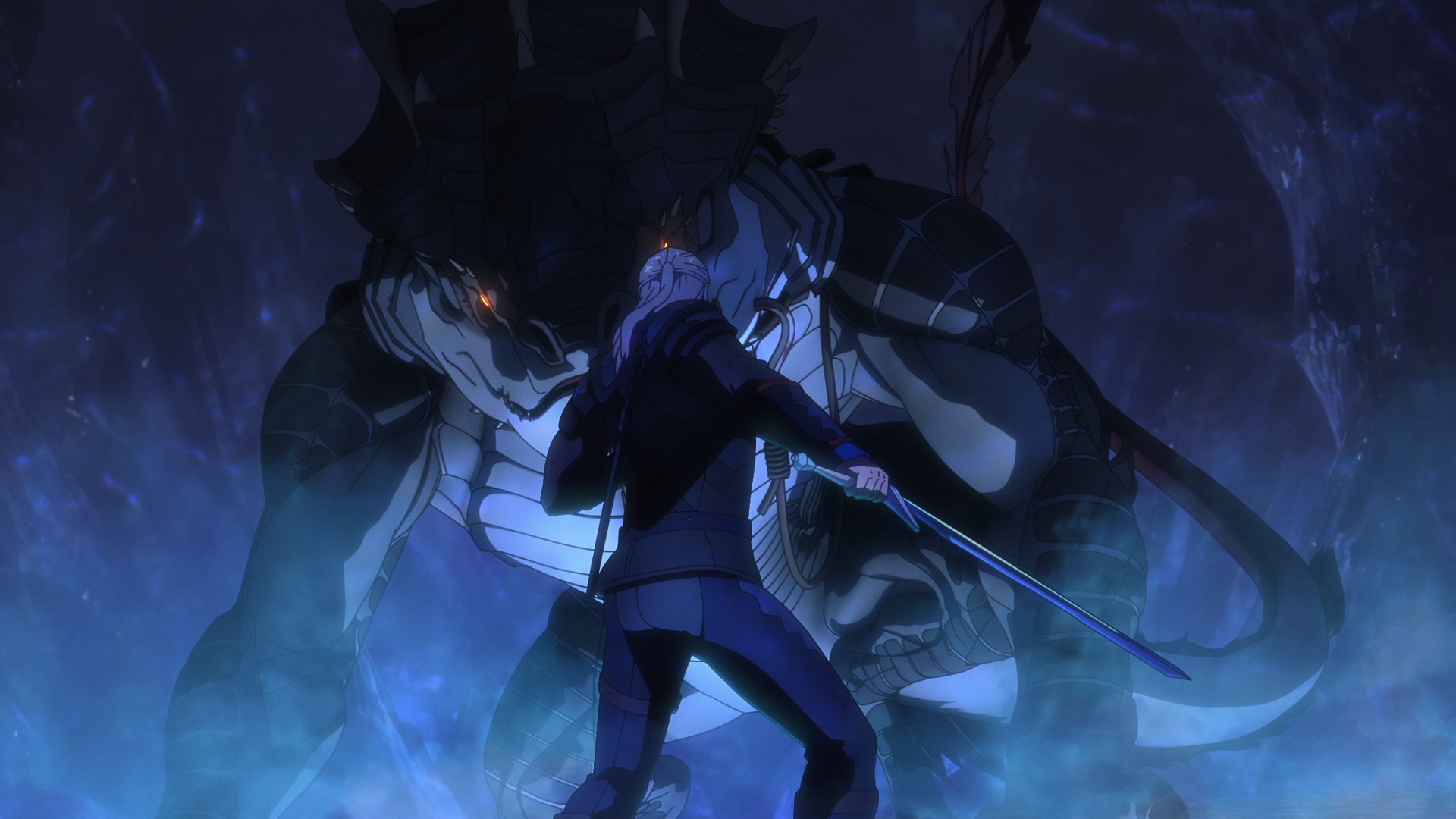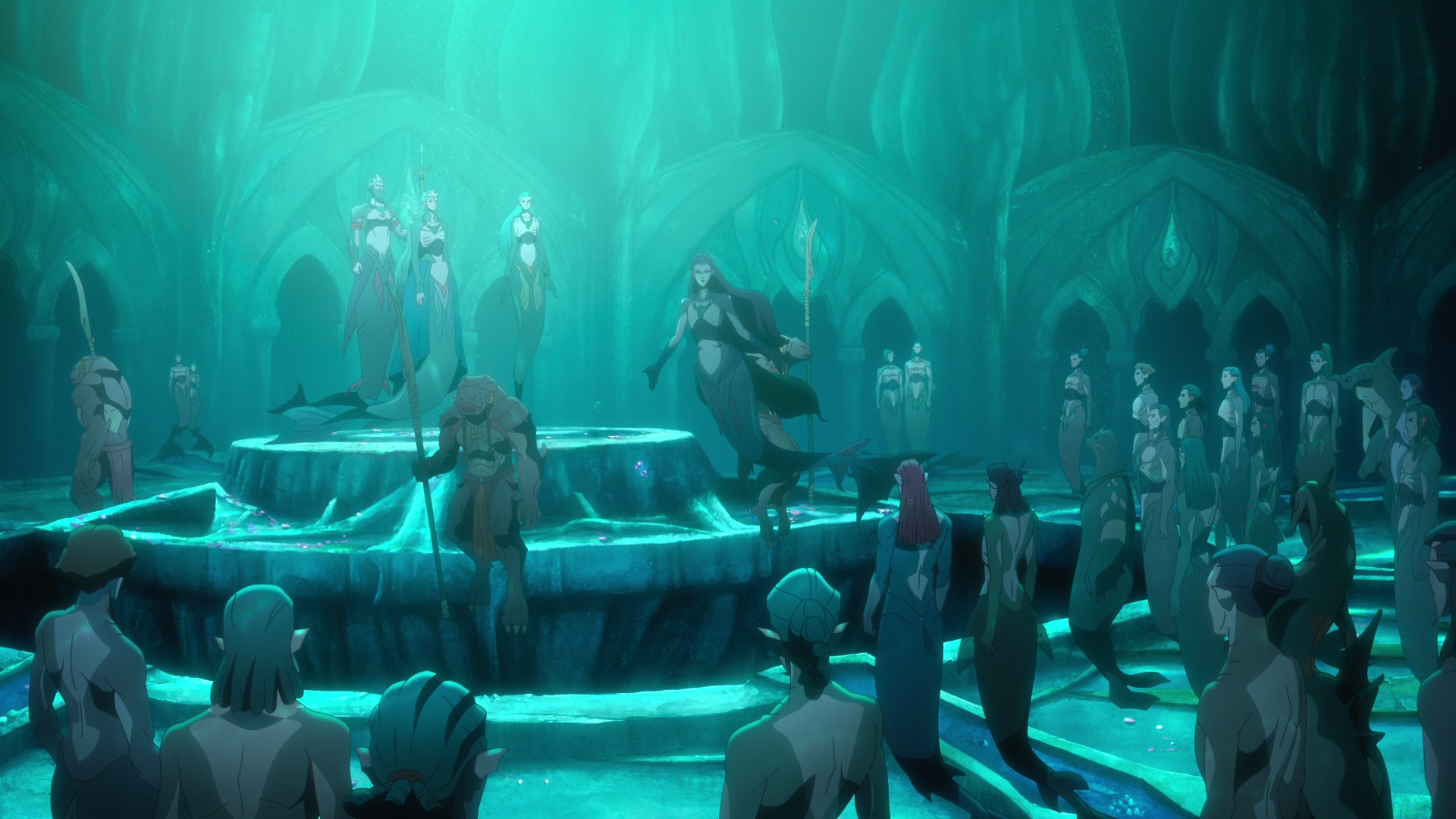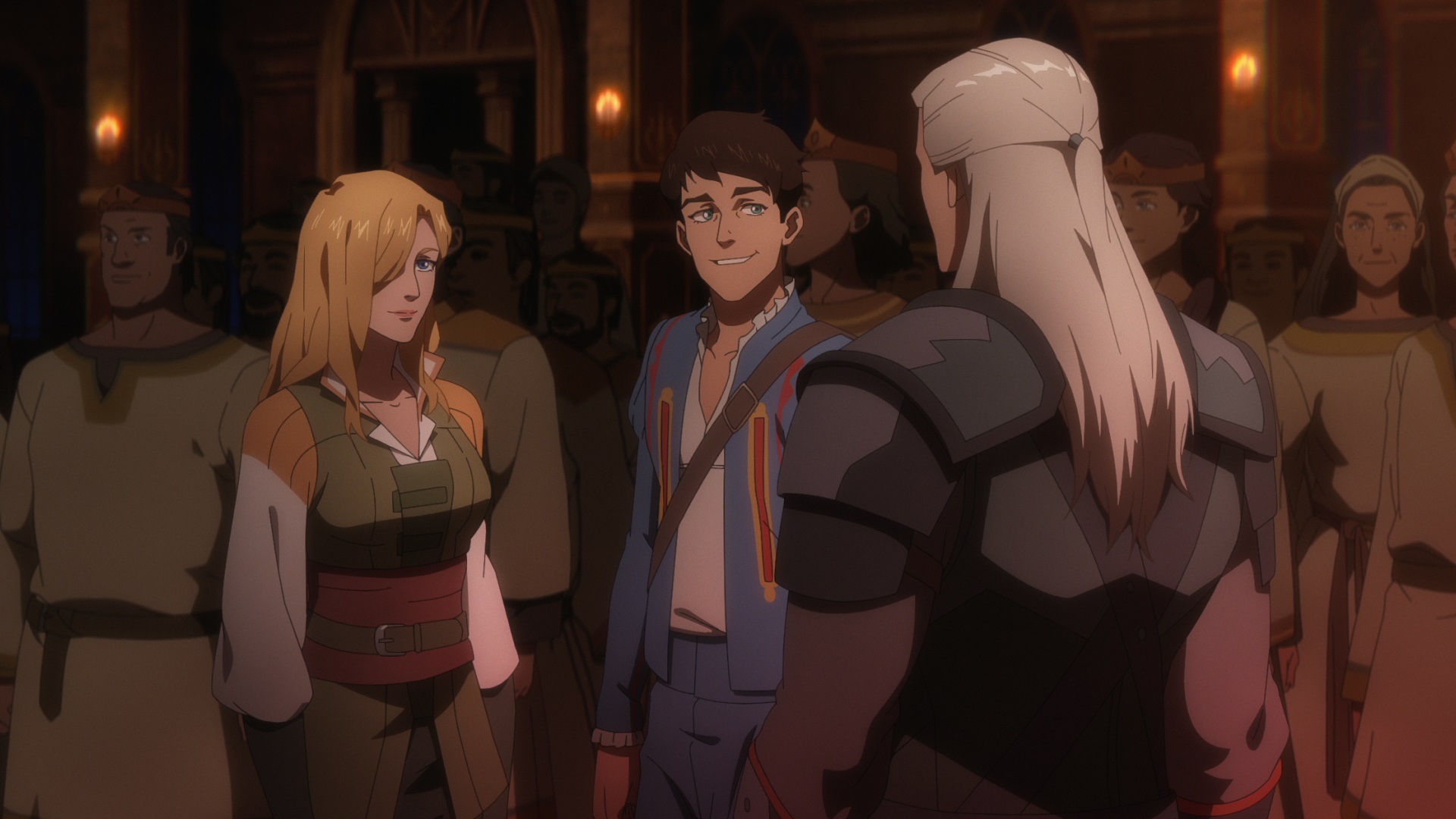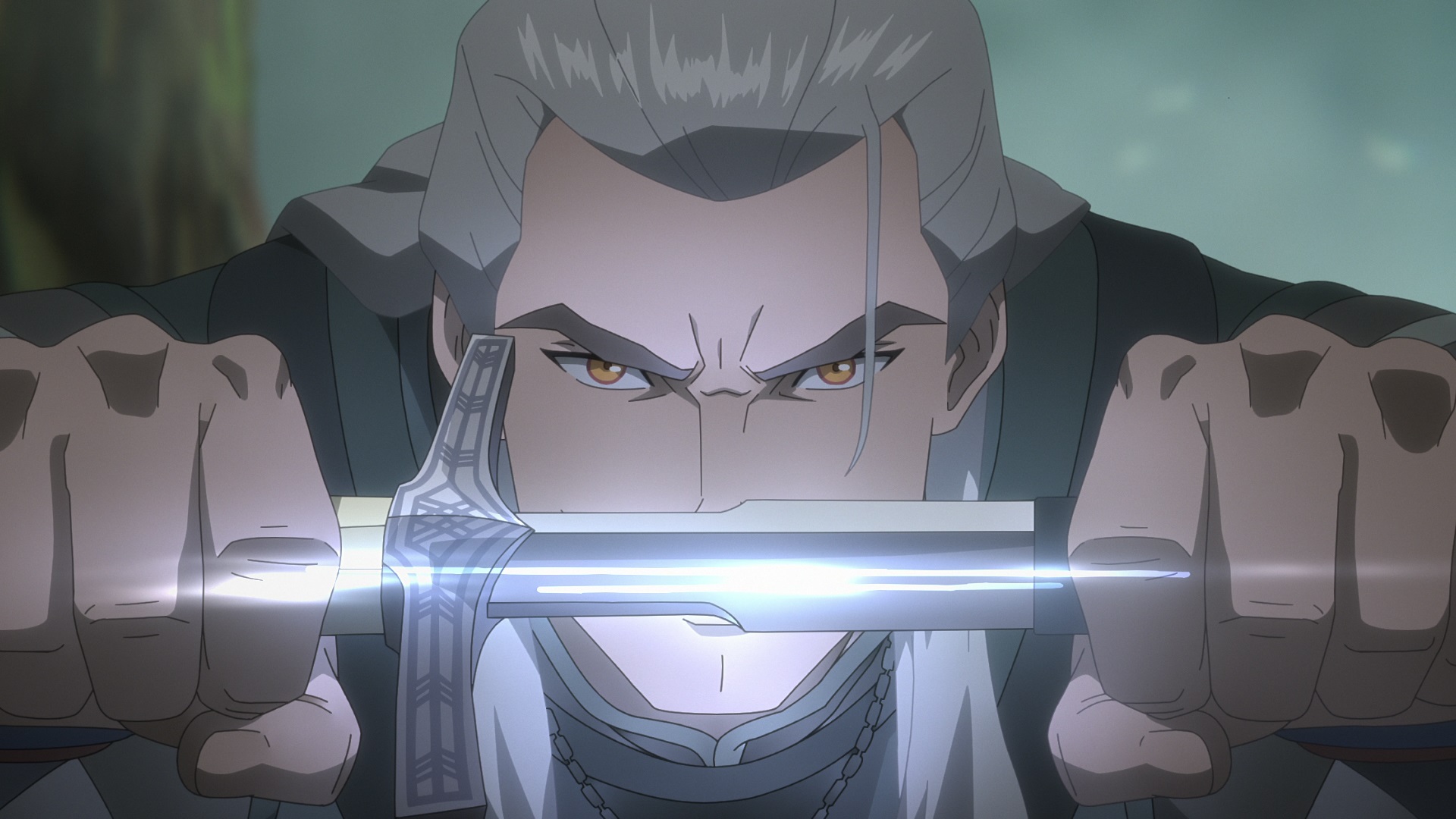Our Verdict
A well-considered adaptation of the story with some great animated sequences that's only damned by faint praise.
PC Gamer's got your back
As stories go, The Witcher: Sirens of the Deep is one you've heard before. Which is for the best, really, because the short story it's based on is one of The Witcher books' more aimless ones and wouldn't work terribly well if a lighter hand had been taken to adapting it into a 90 minute animated romp. In this version there are deceitful humans, a "monster" society, twists, betrayal, redemption, and Geralt doing a lot of sick flips with his swords. You know, hero stuff.
What is it?: A 90 minute animated Witcher spinoff based on the short story A Little Sacrifice.
Premiere: February 11, 2025
See it on: Netflix
Produced by: Netflix, Studio MIR
Directed by: Kang Hei Chul
Sirens of the Deep opens with Geralt (Doug Cockle) and Jaskier (Joey Batey) rambling through side-story territory and strapped for cash, no thanks to Geralt's well-documented aversion to killing creatures that were actually just minding their own business. So they agree to each take on the next job offered to them, leading to a musical performance for Jaskier and another opportunity to ethically refrain from monster hunting for Geralt.
The kingdom of Bremervoord has a problem: the prince (human) is inconveniently enamored with a princess (mermaid) which is going to cause some dynastic planning problems if allowed to continue. Though the merpeople kingdom and Bremervoord have lived in a tense peace for years, it's all at risk as the human pearl-diving industry wanders further into mermaid territory and human ships keep being attacked while the merpeople claim not to be the perpetrators.
As any story of simmering tension between humans and a neighboring society of non-humans is wont to go, Geralt winds up at the center trying to prevent a war as both kingdoms find further reasons to distrust each other. He's helped along by Jaskier's childhood friend and fellow bard Essi Daven (Christina Wren) as they translate overtures of love between human and mermaid monarchs and attempt to keep their respective people from killing each other while determining who's stirring this pot behind the scenes.

In the context of Netflix's growing Witcher adaptation universe, it's a good choice of story to pull from the source material for a standalone adventure and the right amount of artistic license with that material. By the by, it is great to hear Doug Cockle, voice of Geralt in CD Projekt Red's games, pulled in for one of Netflix's adaptations.
The choice in story allows for some nice mermaid society character designs, all gaunt torsos full of gills with kelp-y flowing accents and finned ears that look great in animation but wouldn't have been attempted in a live-action version. It features plenty of colorful undersea society sequences, ship battles, and a whole lineup of massive ocean-dwelling monsters.
Meanwhile, refocusing the story from the original (more on that below) means that director Kang Hei Chul and Studio MIR get to lean into plenty of flashy fight scenes. There's all of Geralt's pirouetting and mid-air acrobatics with sword choreography that you're only going to get in animation plus a few indulgent first-person Geralt POV shots during the bigger fights. If you're going to animate Geralt, of course you should take the opportunity to make him a superhero doing gravity-defying stunts without messing up his Pantene perfect hair.

One blemish on the overall production is that the couple of brief musical number sections feel a bit flat thanks to some weird mixing choices that leave the vocals and accompaniment without much range in volume. I gather it's essentially illegal not to give Joey Batey a singing part after the viral Toss A Coin To Your Witcher moment from the live action show's first season, but Sirens of the Deep really didn't toss him much of anything to work with.
Sirens of the Deep also briefly pays lip service to Geralt and Yennefer's relationship, though the reimagining of the relationships between other characters makes Geralt's hangup over her feel like a vestigial limb in this otherwise standalone story. At that rate, we could have likely done without Geralt's very brief nightmares explaining his falling out with his sorceress lover who makes no actual appearance in the story and pretty easily accepted his side adventure dalliances with Essi—it's not like it's a first for him or for Yen.
Considering The Source
Like Andrzej Sapkowski's short story A Little Sacrifice, Sirens of the Deep is in some ways a riff on Hans Christian Andersen's story The Little Mermaid. Where Sapkowski's work is often a sort of smirk in the direction of fairytales, Netflix's adaptation folds those references in with a more hopeful tone.
In general I've found Netflix's adaptations to miss the mark on The Witcher's true wry sense of humor in favor of shoving Jaskier out as comic relief with an implied laugh track. In this case though, having just re-read A Little Sacrifice, Jaskier's got nearly as many ba dum tshh-level lines right there in the text.

Sirens of the Deep does plenty of reimagining and recasting of characters, though mainly for the sake of telling a more coherent overall story. Those who've read Sword of Destiny will notice that the adaptation features a star-crossed prince and princess rather than a foolish duke and prideful mermaid along with a whole merpeople kingdom side of the story that is only hinted at in A Little Sacrifice. It spins a side character into an embittered bastard son of the throne with his own motivations. It also imagines a backstory for Jaskier as a young boy from Bremervoord so that Essi can be of-age with him as a love interest for Geralt rather than another barely-18 girl for the witcher to tumble into bed with.
Those changes in Geralt's tryst with Essi may actually be the biggest, since the original story spends comparatively little time on monster hunting and way more on Geralt fumbling the bag with this young bard in ways that leave them both much unhappier than what Sirens of the Deep depicts. Ultimately, A Little Sacrifice is a tragedy with a sour ending in which Geralt witnesses one inequitable doomed love story and is the unwilling party to another. His emotional navel-gazing sets him up to recontextualize his relationship with Yennefer as the stories after it immediately return to the dedication they both have to Ciri and the destiny that binds the three of them.

Call me a non-believer, but a more literal interpretation of A Little Sacrifice just would not have been the stuff of a feature-length film worth calling up Studio MIR for. The version we get here is a complete thought in its own right, even if 'hero forcibly negotiates peace between adjacent societies' is one we can all pretty much recite beat-by-beat.
It's a story that's missable by design—Geralt and Jaskier going to a town we'll never see again to solve a conflict with no bearing on the war of the Northern Kingdoms with help from characters who will never return to the plot. But by the same token it's self-contained and satisfying as a story and a well-choreographed 2D animation for Geralt in all his glory.
A well-considered adaptation of the story with some great animated sequences that's only damned by faint praise.

Lauren has been writing for PC Gamer since she went hunting for the cryptid Dark Souls fashion police in 2017. She accepted her role as Associate Editor in 2021, now serving as self-appointed chief cozy games and farmlife sim enjoyer. Her career originally began in game development and she remains fascinated by how games tick in the modding and speedrunning scenes. She likes long fantasy books, longer RPGs, can't stop playing co-op survival crafting games, and has spent a number of hours she refuses to count building houses in The Sims games for over 20 years.


